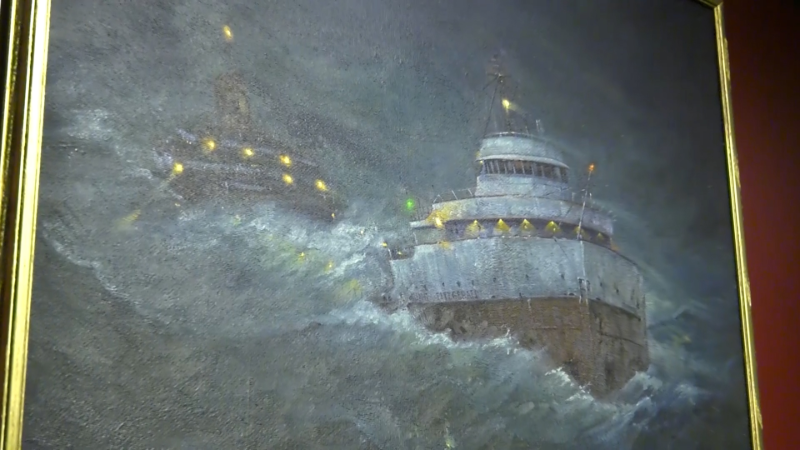Photos: Camp, Woolsey and Holy fire victims brave flooding, debris flows as storm pounds California
Bands of heavy rain and mountain snow moved across California on Thursday into Friday, raising concerns about mudslides and debris flows in areas recently scorched by wildfires.
The heavy rainstorms hit the same part of Northern California scorched three weeks ago by the Camp Fire. The storm flooded roads and drenched hundreds of people living in makeshift shelters since the fire destroyed their community.
Residents, such as Dale Word from Chico, California, were again forced to evacuate, as flash floods inundated roads and trapped motorists and residents, the Associated Press (AP) reports.
Heavy rain caused this debris flow in Trabuco Canyon, California, from the Holy Fire burn area. Thousand of residents in Orange County were ordered to evacuate with heavy rain triggering flash flood warnings. The flow rushed down the normally dry Trabuco Creek.
Swift water teams used boats to make rescues at three homes, and officials told people in about 100 vehicles to stay in place.
The rain receded late Thursday afternoon, leaving a mess of mud and debris along with downed trees and power poles.
Thursday’s storm brought 1.5 inches of rain in an hour in the area, according to the National Weather Service (NWS).
The local sheriff’s department ordered evacuations but could not say how many people were affected. The water rescues occurred in Chico, where many of the fire evacuees from Paradise are staying, according to AP.
Approximately 80 fire evacuees, camping out in a Walmart parking lot in Chico, tried to stay dry and save their few possessions. They used cases of water, inflated air mattresses and soggy sleeping bags to keep their tents from blowing away, the Huffington Post reports.
Paradise has been under mandatory evacuation orders for about three weeks since the wildfire killed at least 88 people and destroyed nearly 14,000 homes.
Residents could begin returning early next week, but only if the wet weather doesn’t hinder efforts to clear roads and restore power, Sheriff Kory Honea said Wednesday, Nov. 28.
Several mudslides and debris flows were reported in Northern California.
A mudslide was reported in Oakland along Highway 13 in Oakland. Another mudslide was reported on Interstate 5 northbound near Sacramento.
In Santa Cruz County, debris flows blocked portions of roadways in Scotts Valley. Flooding in San Francisco and Daly City flooded roads with as much as 2 feet of water.
In Southern California, the storm knocked out power and flooded roadways across greater Los Angeles.
Heavy rain caused flooding and mudslides near Malibu around the area of the Woosley Fire. Some residents in the area were asked to evacuate.
Numerous traffic accidents occurred on slick freeways, and most vehicles traveling in the mountains were ordered to put chains on their tires.
Mud and rock slides closed two mountain highways.
Residents were urged to voluntarily evacuate a string of neighborhoods about 45 miles southeast of Los Angeles. Mandatory evacuations were ordered for parts of the city of Lake Elsinore beneath charred hillsides where there were heavy debris flows but no significant damage.
Pepperdine University canceled classes on Thursday due to the road conditions in the area. The University has already canceled many classes due to the wildfires.
On the coast near Big Sur, the California Department of Transportation closed a 12-mile stretch of Highway 1 because of potential instability. There were a number of other roads closures.
Strong winds whipped the mountains in Southern California, with gusts occasionally topping 70 mph.
Downtown Los Angeles picked up more rain on Thursday, 1.48 inches, than what typically falls during the entire month of November, 1.11 inches.
Redding, California, also received an impressive 2.54 inches of rain on Thursday, which bumped its month-to-date rainfall to 6.52 inches, or 153 percent of normal.
Meanwhile, heavy snow pummeled the Sierra Nevada. The weather service issued a backcountry avalanche warning for most of the central Sierra, including the Lake Tahoe area.
Also, along the coast, health authorities urged people to stay away from beach water, which may contain bacteria, chemicals, debris, trash and other public health hazards due to runoff.
Report a Typo











